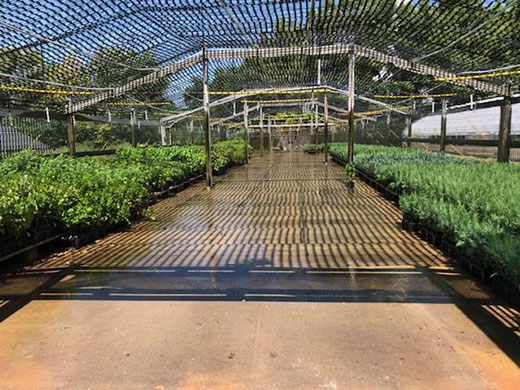
The annual Kansas Forest Service Conservation Tree and Shrub sale opens on Sept. 1. | Download this photo
Kansas Forest Service tree, shrub seedling sale opens Sept. 1
Program offers species suited for Great Plains states
August 26, 2020
MANHATTAN, Kan. -- The Kansas Forest Service Conservation Tree and Shrub sale opens Sept. 1, providing landowners with a source for low-cost tree and shrub seedlings.
“Large conservation plantings can become very costly when several hundreds or thousands of plants are needed to meet the conservation goals of the landowner,” said Aaron Yoder, conservation trees specialist.
Conservation plantings may function as wildlife habitat, windbreaks, wood lots, timber plantations, or educational and riparian (streambank) plantings.
Yoder said species grown in the program are selected for characteristics that make them ideal candidates for conservation plantings. This year, Rusty Blackhaw (Viburnum rufidulum), also known as Southern Blackhaw, and New Jersey Tea are two new shrub species offered. Both species are native to Kansas.
“Both species of shrub offer multiple benefits for wildlife, especially as nectar and pollen sources for bees, butterflies and other pollinators,” Yoder said.
Many other native and a few non-native species are offered through the conservation program that will thrive in Kansas and surrounding states.
Planting trees and shrubs in the fall presents several benefits over spring plantings, including less pressure from insects, disease and weeds. Additionally, seedlings planted in the fall have lower moisture demands than spring plantings and soils are typically drier in the fall as compared to wet or saturated soils in the spring, which restrict field preparation and planting activities, according to Yoder.
To provide the greatest chance of success for conservation plantings, seedlings will only be shipped to Great Plains states including Kansas, Oklahoma, Texas, Nebraska, North Dakota, South Dakota, Colorado, Wyoming, Minnesota, Iowa, Arkansas and Missouri. The KFS fall conservation seedling sales coincide with the ideal planting time for these states. Limiting the states served by the conservation program is a change for the 2020 fall season.
In addition to the new shipping limitations, all orders placed in the program must be shipped. The change to a shipping-only policy ensures the safety of KFS staff, their families and the public as the program continues to operate during the COVID-19 pandemic.
For more information on the Conservation Tree and Shrub program or to place an order beginning on Sept. 1, please visit https://www.kansasforests.org/conservation_trees/.
